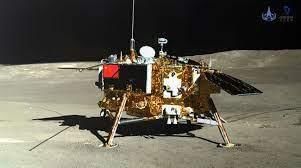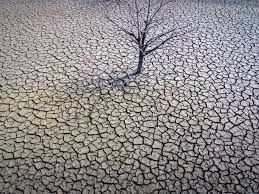Weekly Current Affairs (15th to 21st March 2024) | General Test Preparation for CUET UG - CUET Commerce PDF Download
China’s Lunar Exploration Programme

China’s lunar exploration programme is a series of ongoing robotic Moon missions by the China National Space Administration (CNSA). The programme incorporates lunar orbiters, landers, rovers and sample return spacecraft, launched using Long March rockets. It aims to study the Moon’s surface, geology, and environment, as well as to demonstrate and develop new technologies for space exploration.
Queqiao-2 Satellite
- On March 21, 2024, China launched the Queqiao-2 satellite, named after a mythological bridge made of magpies, as part of its lunar exploration programme. The satellite, weighing 1.2 metric tons, was carried by a Long March 8 rocket from the southern island province of Hainan. Queqiao-2 will act as a communications bridge between ground operations on Earth and upcoming missions on the far side of the moon.
Relay Function
- Due to the Moon’s rotation, its far side always faces away from Earth, making direct communication impossible. Queqiao-2 will orbit the Moon and relay signals to and from the Chang’e-6 mission, expected to launch in May. The satellite will also support the Chang’e-7 lunar mission in 2026 and the Chang’e-8 mission in 2028.
Future Constellation
- By 2040, Queqiao-2 will be part of a constellation of relay satellites serving as a communications bridge for crewed lunar missions and exploration on other planets like Mars and Venus. The constellation will also provide communications, navigation, and remote sensing support for China’s planned research station at the Moon’s south pole.
Orbit
- Queqiao-2 is expected to enter a highly elliptical orbit that passes close to the Moon’s south pole, reaching as high as 8,600 km above its surface and enabling a communication link between Earth and the Moon for more than eight hours. For the remainder of its roughly 12-hour orbit, Queqiao-2 will be as low as 300 km above the lunar surface.
Tiandu-1 and Tiandu-2 Miniature Satellites
- Alongside Queqiao-2, China launched two miniature satellites, Tiandu-1 and Tiandu-2. These satellites will conduct tests for the construction of the planned constellation.
Chang’e-6 Mission
- The robotic Chang’e-6 mission, scheduled for launch in May, will seek to retrieve samples from an ancient basin on the far side of the Moon. This will be the first time lunar material has been acquired from the Moon’s hidden side.
Queqiao-1 Satellite
- Queqiao-2 will take over from the ageing Queqiao-1 satellite, launched in 2018. Queqiao-1, a third as massive as Queqiao-2, was the first relay satellite deployed to the far side of the moon, supporting the Chang’e-4 mission. Despite a designed lifespan of five years, Queqiao-1 is still operating and orbits a point in space about 70,000 km beyond the moon.
Chang’e-4 Mission and Yutu-2 Rover
- In 2019, the Chang’e-4 mission made history by becoming the first spacecraft to perform a soft landing on the far side of the moon. It successfully delivered the robotic rover Yutu-2, or Jade Rabbit in Chinese, to the surface. Yutu-2 is still in operation, exploring the lunar landscape.
Future Plans
- China’s lunar exploration programme is expected to continue with crewed missions to the Moon’s surface by 2030. The planned research outpost at the Moon’s south pole will further advance scientific understanding and technological capabilities related to lunar exploration.
Fact-Checking Unit
The Central government of India notified the setting up of a fact-checking unit (FCU) under the Press Information Bureau (PIB) of the Ministry of Information and Broadcasting. The FCU has been established to monitor content on social media platforms related to the government’s business, as per the recently amended Information Technology Rules.
Legal Battle and Bombay High Court’s Decision:
- The notification comes in the wake of a legal battle in the Bombay High Court, where comedian Kunal Kamra and other petitioners sought a stay on the setting up of the FCU until the court ruled on the legality of the new rule. However, the high court rejected the interim plea, stating that no grave and irreparable loss would be caused by allowing the establishment of the FCU under the IT Rules.
- The case was initially heard by a two-judge bench, which delivered a split verdict on January 31, 2024. Consequently, Justice A S Chandurkar was assigned as the third judge to hear the case. In his decision, Justice Chandurkar opined that the larger public interest outweighed the potential loss claimed by the petitioners, and thus, the FCU could be notified pending the final decision on the challenge to the IT Rules.
Amendments to the IT Rules:
- On April 6, 2023, the Union government promulgated amendments to the Information Technology (Intermediary Guidelines and Digital Media Ethics Code) Rules, 2021. The amendments included a provision for the establishment of an FCU to flag fake, false, or misleading online content related to the government’s business.
FCU’s Functioning:
- Under the amended IT Rules, if the FCU identifies or is informed about any posts that are fake, false, or contain misleading facts about the government’s business, it will flag the content to social media intermediaries. The intermediaries then have two options: either take down the flagged post or put a disclaimer on it.
- However, if the intermediary chooses to put a disclaimer on the flagged content, they lose their safe harbour/immunity and become liable for legal action. This provision has raised concerns among social media platforms and free speech advocates, who fear that intermediaries may preemptively take down any content flagged by the FCU to avoid potential legal consequences.
Supreme Court Stays the Operation
- The Supreme Court stayed the operation of the Centre’s notification regarding the Press Information Bureau’s Fact Checking Unit (FCU) until the Bombay High Court takes a final decision on petitions challenging the 2023 amendments to the Information Technology Rules.
- A three-judge bench presided by Chief Justice of India D Y Chandrachud noted that the Centre had assured the High Court that the FCU will not be notified till the petitions challenging the Rule of the Information Technology (Intermediary Guidelines and Digital Media Ethics Code) Amendment Rules 2023 (IT Amendment Rules, 2023) are decided by the High Court.
Important facts for Exams:
- The Press Information Bureau (PIB) is the nodal agency of the Government of India for disseminating information to the media on government policies, programs, and initiatives.
- The Information Technology (Intermediary Guidelines and Digital Media Ethics Code) Rules, 2021, were initially introduced to regulate social media platforms, digital news media, and over-the-top (OTT) content providers.
China’s Marriage Rates Rise for First Time in Nine Years
In 2023, China witnessed a significant increase in the number of couples choosing to marry, marking the first uptick in marriage rates in nine years. According to data released by the Ministry of Civil Affairs, 7.68 million newlyweds tied the knot in the country, representing a 12.4% increase compared to the previous year. This translates to an additional 845,000 marriages in 2023 compared to 2022.
Historical Context:
- China’s marriage rates have been declining for nearly a decade, with the last record high of 13.47 million marriages occurring in 2013. The country’s population growth has been a concern for the government, prompting the implementation of various policies to encourage couples to have more children.
Government Initiatives:
- The rise in marriage rates comes as the Chinese government ramps up efforts to promote marriage and boost birth rates, which have reached record lows in recent years. Earlier this month, Premier Li Qiang pledged to create a “birth-friendly society” and support long-term, balanced population development. The state planner also announced plans to improve policies aimed at reducing the costs associated with childbirth, parenting, and education, as well as refining parental leave policies.
Factors Influencing Marriage Rates:
- Several factors have contributed to the decline in marriage rates in China over the past decade. The country’s economic slowdown has led many individuals to postpone or forgo marriage altogether. Additionally, young women have expressed concerns over revised property laws that appear to favor male ownership, making them more hesitant to marry.
Divorce Rates:
- Despite the increase in marriages, the latest figures also reveal a rise in the number of couples filing for uncontested divorces. In 2023, a total of 2.59 million couples registered for divorces where neither spouse objected. The Ministry of Civil Affairs has not yet released data on the number of contested divorces.
Aging Population:
- China is facing the challenge of a rapidly aging population, with approximately 300 million Chinese citizens expected to retire within the next decade. This demographic shift is equivalent to nearly the entire population of the United States. As marriage rates are closely linked to birth rates, policymakers are hopeful that the recent uptick in marriages could lead to an increase in the number of babies born.
One-Child Policy and Its Aftermath:
- China’s population growth has been a concern for decades, particularly after the introduction of the controversial one-child policy in the 1980s. The policy was aimed at controlling overpopulation at the time but has since contributed to falling birth rates. In 2015, the government lifted the one-child policy, allowing couples to have two children. Further relaxations were introduced in 2021, permitting couples to have up to three children.
Regional Comparisons:
- China is not alone in its efforts to address falling birth rates and an aging population. Other major Asian economies, such as South Korea, Japan, and Hong Kong, are also grappling with similar challenges. South Korea currently has the lowest birth rate in the world, with its population expected to halve by 2100. Japan recorded a record-low 800,000 births in 2022, while Hong Kong announced a HK$20,000 (£2,010) incentive for each newborn to combat the city’s low birth rate.
Important Facts for Exams
- The one-child policy was introduced in China in the 1980s to control the country’s rapidly growing population. It was estimated that the policy prevented around 400 million births during its implementation.
- In 2022, China’s population fell for the first time in six decades, with deaths outnumbering births.
- The term “sheng nu,” which translates to “leftover women,” has been used in China to describe educated, professional women who remain unmarried in their late 20s and beyond.
Global Climate Report 2023
The World Meteorological Organization (WMO) released its State of the Global Climate Report 2023, confirming that 2023 was the warmest year on record. The report highlights the alarming trends in various climate indicators, including record-breaking greenhouse gas levels, surface temperatures, ocean heat and acidification, sea level rise, Antarctic sea ice cover, and glacier retreat.
Key Findings
- Global Temperature: The global average near-surface temperature in 2023 was 1.45 ± 0.12 °C above the pre-industrial (1850–1900) average, making it the warmest year in the 174-year observational record. The previous warmest years were 2016 at 1.29 ± 0.12 °C and 2020 at 1.27 ± 0.13 °C above the 1850–1900 average.
- Warmest Decade: The 10-year average (2014–2023) global temperature was 1.20 ± 0.12 °C above the 1850–1900 average, making it the warmest 10-year period on record.
- Record-Breaking Months: Globally, every month from June to December was record warm for the respective month. September 2023 surpassed the previous global record for September by a wide margin (0.46 to 0.54 °C).
- Greenhouse Gas Levels: The observed concentrations of the three main greenhouse gases – carbon dioxide, methane, and nitrous oxide – reached record levels in 2022, with real-time data from specific locations showing a continued increase in 2023.
- Ocean Warmth: Global average sea-surface temperatures (SSTs) were at a record high from April onward, with records in July, August, and September broken by a particularly wide margin. Exceptional warmth was recorded in various regions, including the eastern North Atlantic, the Gulf of Mexico, the Caribbean, the North Pacific, and large areas of the Southern Ocean.
Impact on Human Life and Ecosystems
The WMO report highlights the devastating impact of climate change on human life and ecosystems:
- Extreme Weather Events: Heatwaves, floods, droughts, wildfires, and rapidly intensifying tropical cyclones caused significant damage, disrupting everyday life for millions and resulting in billions of dollars in economic losses.
- Marine Heatwaves: On an average day in 2023, nearly one-third of the global ocean was gripped by a marine heatwave, harming vital ecosystems and food systems. By the end of the year, over 90% of the ocean had experienced heatwave conditions at some point.
- Glacier Retreat: The global set of reference glaciers suffered the largest loss of ice on record (since 1950), driven by extreme melt in both western North America and Europe, according to preliminary data.
- Food Insecurity: The number of people who are acutely food insecure worldwide had more than doubled, from 149 million people before the COVID-19 pandemic to 333 million people in 2023 (in 78 countries monitored by the World Food Programme). Weather and climate extremes were aggravating factors, although not the root cause.
- Displacement: Weather hazards continued to trigger displacement in 2023, illustrating how climate shocks undermine resilience and create new protection risks among the most vulnerable populations.
Renewable Energy as a Glimmer of Hope
- Despite the grim findings, the WMO report pointed out a glimmer of hope in the form of increased renewable energy generation. In 2023, renewable capacity additions increased by almost 50% from 2022, for a total of 510 gigawatts (GW) – the highest rate observed in the past two decades. This surge in renewable energy is primarily driven by solar radiation, wind, and the water cycle, and has the potential to achieve decarbonization targets.
Important Facts for Exams
- The World Meteorological Organization (WMO) is a specialized agency of the United Nations responsible for promoting international cooperation in the field of meteorology, hydrology, and related geophysical sciences.
- The WMO was established in 1950 and has 193 member states and territories.
- World Meteorological Day is celebrated annually on March 23 to commemorate the establishment of the WMO and to raise awareness about the importance of meteorology and climate science.
Signals Technology Evaluation and Adaptation Group (STEAG)
In a significant step towards preparing for the future of warfare, the Indian Army has established the “Signals Technology Evaluation and Adaptation Group” (STEAG), a first-of-its-kind specialised technology unit. The primary objective of STEAG is to conduct research and evaluation of cutting-edge communication technologies such as Artificial Intelligence (AI), 5G and 6G networks, machine learning, and quantum technologies for defence applications.
Indian Armed Forces’ Modernisation:
- The creation of STEAG aligns with the Indian armed forces’ realisation of the need to equip themselves with next-generation fighting capabilities. In 2023, the Army decided to operationalise command cyber operations and support wings (CCOSW) for cyberwarfare, demonstrating their commitment to staying ahead in the rapidly evolving technological landscape of modern warfare.
Corps of Signals and STEAG:
- Although STEAG is currently in its early stages of development, it will operate under the Corps of Signals, a combat support arm responsible for handling military communications. The Indian Army recognises that communications play a crucial role in military operations, and the side with superior communication technologies and the ability to connect various constituents for information sharing will have a significant advantage over its adversary.
Seamless Communication Support:
- The Indian Army emphasises the importance of inducting new equipment to provide seamless communication support to units and formations during operations. STEAG’s establishment is a groundbreaking initiative aimed at imbibing advancements in technology and bolstering the Army’s capabilities in the digital domain.
Focus Areas of STEAG:
- STEAG will focus on nurturing and developing tailored technologies spanning the complete spectrum of wired and wireless systems. This includes electronic exchanges, mobile communications, Software Defined Radios (SDR), Electronic Warfare (EW) systems, 5G and 6G networks, Quantum Technologies, Artificial Intelligence, and Machine Learning. By leveraging these cutting-edge technologies, the Indian Army aims to enhance its communication capabilities and gain a strategic edge in modern warfare.
Premier Organisation for Defence Applications:
- STEAG is envisioned as a premier organisation, the first of its kind, equipped with the capability to harness niche technology, leverage cutting-edge solutions, and identify suitable use-cases for defence applications. The unit will foster collaboration and partnership with academia and industry to achieve these goals.
Technical Scouting and Evaluation:
- The hi-tech unit will carry out technical scouting, evaluation, development, and management of core ICT solutions. It will also provide user interface support by maintaining and upgrading contemporary technologies available in the environment. By staying at the forefront of technological advancements, STEAG aims to ensure that the Indian Army remains well-equipped to face the challenges of modern warfare.
Aligning with Atmanirbhar Bharat and Start-Up India:
- STEAG’s establishment aligns with the tenets of Atmanirbhar Bharat (Self-Reliant India) and Start-Up India initiatives. The unit aims to bridge the divide between the Armed Forces, industry, and academia, fostering self-reliance in high-end communication technologies. Until now, these technologies have been a monopoly of select countries with advanced economies and research ecosystems.
- By collaborating with industry and academia, the unit will contribute to the development of indigenous solutions, reducing dependence on foreign technologies and strengthening India’s defence capabilities.
New Chemicals in Plastics
- A new report published has uncovered the presence of at least 3,000 more chemicals in plastics than previously estimated by environmental agencies. The study, conducted by a team of European scientists and funded by the Norwegian Research Council, has identified over 16,000 chemicals in plastics, with a quarter of them thought to be hazardous to human health and the environment.
- This finding has raised significant concerns about pollution and consumer safety, particularly as plastics are ubiquitous in everyday items such as food packaging, toys, and medical devices.
Plastic Chemicals Exceed Previous Estimates
- The United Nations Environment Programme (UNEP) had previously identified around 13,000 plastic chemicals. However, the recent report has revealed a staggering 16,000 chemicals in plastics, surpassing previous estimates by a considerable margin. This discovery underscores the urgent need for a comprehensive approach to tackle the mounting plastic pollution crisis, as approximately 400 million tonnes of plastic waste are produced every year.
Addressing the Full Life Cycle of Plastics
- According to the report, to effectively solve the plastic pollution problem, it is crucial to examine the full life cycle of plastics and address the issue of chemicals. Plastic chemicals can leach into water and food, leading to potential health risks for consumers. It is emphasized that hundreds, if not thousands, of plastic chemicals are now being found in people, with some of them linked to adverse health outcomes such as fertility issues and cardiovascular disease.
Chemicals in Everyday Plastic Products
- Experts of Norwegian University of Science and Technology, highlighted the prevalence of chemicals in everyday plastic products. When examining products used on a daily basis, researchers often find between hundreds to thousands of chemicals in a single plastic item. This finding underscores the need for greater transparency and regulation of the chemicals used in plastics, including additives, processing aids, and impurities.
Industry Response and Need for Transparency
- Regulatory and Technical Affairs for the American Chemistry Council, an industry group dominated by plastics makers, argued that the report’s findings sought to advance a hazard framework that ignores real-world exposures and paints an incomplete picture for regulators and the public. However, the report’s authors stressed that addressing only plastic waste is insufficient to protect people and that greater transparency is needed regarding the chemicals going into plastics, including recycled products.
Lack of Basic Information and Regulation
- The report highlighted a significant lack of basic information on the chemical identity of a quarter of the identified chemicals in plastics. This lack of transparency stems from complex value chains, where producers often do not have a clear understanding of the chemicals present in their products. Furthermore, only 6% of the chemicals found in plastics are regulated internationally, indicating a pressing need for regulatory pressure to encourage disclosure of the chemical composition of plastic products.
Next Steps in Treaty Negotiations
- Negotiations for the plastics treaty are set to continue next month in Ottawa, Canada, with the goal of finalizing the treaty by December in Busan, South Korea. The report’s findings are expected to play a significant role in shaping the discussions and highlighting the urgent need for a comprehensive approach that addresses both plastic waste and the chemicals present in plastics.
Human Gut Bacteria Aid in Plant Cellulose Digestion
A recent study published in the journal Science has shed light on previously undescribed human gut bacteria that play a crucial role in the digestion of plant cellulose. These bacteria, which are abundant in ancient and hunter-gatherer microbiomes but scarce in urban societies, have been linked to the growing consumption of processed food in industrialized countries.
Discovery of New Cellulose-Digesting Bacteria
- The study discovered three new species of cellulose-digesting bacteria in the human gut, namely Candidatus Ruminococcus primaciens, Ruminococcus hominiciens, and Ruminococcus ruminiciens. These bacteria were found to be prevalent among rural populations, great apes, ancient human societies, and hunter-gatherer communities.
The Importance of Cellulose Digestion
- Cellulose is the main component of plant fiber and a common element in diets that include plant-based material. Humans rely on the gut microbiome to digest cellulose, which is beneficial to gut microbiome stability. The newly discovered bacteria convert these indigestible compounds into short-chain fatty acids, supplying energy to the host.
Decline of Cellulose-Degrading Bacteria in Industrialized Countries
- The study found that the prevalence of cellulose-degrading bacteria varies significantly between industrialized and non-industrialized countries. In industrialized countries like Denmark, China, Sweden, and the United States, the collective prevalence was found to be only 4.6%, while it was much higher in ancient human societies (43%), hunter-gatherers (21%), and geographically diverse rural societies (20%).
- The researchers attribute this decline to the growing consumption of processed food in industrialized nations, which lacks plant fiber. Modern industrialized diets are dominated by processed foods, leading to a decrease in dietary fiber intake compared to hunter-gatherers and rural populations.
Adaptation of Bacteria to Host Lifestyle and Diet
- The study also found that the cellulose-degrading bacteria adapt to the host’s lifestyle and diet. For example, the human microbe Ruminococcus hominiciens was found to primarily reside in the guts of humans and great apes, likely originating in the ruminant gut and then colonizing humans possibly during domestication.
- Furthermore, the human microbes were found to digest monocots such as maize, rice, and wheat, which are major components of the human diet, while non-human primate strains could degrade chitin, a polymer abundant in insects.
Implications for Human Health
- The decline of cellulose-degrading bacteria in the human gut potentially impacts energy balance and other health-related aspects. Dietary fiber is essential for maintaining a stable gut microbiome, and its absence in modern industrialized diets may have negative consequences for human health.
- The study highlights the importance of a plant-based diet rich in dietary fiber for the maintenance of a healthy gut microbiome. The findings also suggest that the loss of these beneficial bacteria may be a contributing factor to the increasing prevalence of certain health issues in industrialized societies.
Future Research Directions
- The discovery of new cellulose-degrading bacteria in the human gut opens up new avenues for research into the role of the gut microbiome in human health. Further studies are needed to understand the mechanisms by which these bacteria contribute to cellulose digestion and the potential health benefits of maintaining a diverse and abundant population of these microbes in the gut.
- Additionally, the study highlights the need for further research into the impact of processed food consumption on the gut microbiome and the development of strategies to promote the growth and maintenance of beneficial gut bacteria.
TM Krishna conferred Sangita Kalanidhi Award
Thodur Madabusi Krishna, a renowned Carnatic classical vocalist known for challenging conventional ideas about caste and gender politics in Carnatic music, has been awarded the prestigious Sangita Kalanidhi award by the Madras Music Academy. The award recognizes Krishna’s powerful voice, adherence to tradition, exploratory approach to music, and his use of music as a tool for social reform. T.M. Krishna began his musical journey at a young age. At the age of 12, Krishna presented his debut concert at the Madras Music Academy.
Challenging Conventions
- Krishna has been at the forefront of challenging the conventional ideas about caste and gender politics in Carnatic music. He has highlighted the institutional issues and non-inclusivity of the famed December Music Season, which stems from the Music Academy’s first annual conference on Carnatic music in 1929.
- In 2015, Krishna opted out of singing at the Music Academy, citing concerns about the “commodification” and “socially stifling” nature of the December Music Season. He also emphasized the non-inclusive nature of the art form and the music season, where non-Brahmin musicians and certain art forms such as Pariyattam, Villupattu, Gaana-Pattu, and Kuthu were being left out.
Promoting Inclusivity
- Krishna has been advocating for the inclusion of various art forms and breaking down the caste elitism in the existing Carnatic music system. He started a music festival in the fishing village of Uroor-Olcott Kuppam to promote inclusivity and unite various art forms.
- In February 2024, Krishna returned to the Music Academy to present a concert, Tyagaraja Aradhana, as an ode to the Telugu saint-composer. Last year, he also organized a ‘Nadaswaram and Thavil Festival’ in collaboration with Narada Gana Sabha to promote the inclusion of nadaswaram and thavil players, who are predominantly non-Brahmins and often excluded from the kutcheri circuit.
Madras Music Academy’s Recognition
- The Madras Music Academy’s decision to confer the Sangita Kalanidhi award on T.M. Krishna is a significant recognition of his contributions to Carnatic music and his efforts to challenge the status quo. According to the President of the Madras Music Academy, Krishna was chosen for his powerful voice, adherence to tradition, exploratory approach to music, and his use of music as a tool for social reform.
Other Awardees
- The Madras Music Academy also announced other awards along with the Sangita Kalanidhi. The Nritya Kalanidhi was awarded to Mohiniyattam exponent Neena Prasad, who runs music academies in Chennai and Thiruvananthapuram. The two Sangeet Acharya awards were given to mridangam guru Professor Parasalla Ravi and Carnatic vocalist Geetha Raja, a student of the renowned T. Brinda of the Veenai Dhanammal school of Carnatic Music.
Sangita Kalanidhi Award
- The Sangita Kalanidhi award, instituted by the Madras Music Academy, is the most prestigious recognition in the field of Carnatic music. It is awarded to musicians who have made significant contributions to the art form and have demonstrated excellence in their performances and teachings.
- The award not only acknowledges the artistic achievements of the recipient but also serves as a platform to showcase their talent and inspire future generations of musicians. It is a testament to the rich cultural heritage of Carnatic music and the importance of preserving and promoting this art form.
Electoral Bonds Data
- The Election Commission of India (ECI) has released detailed data on electoral bonds, following a directive from the Supreme Court. The information, sourced from the State Bank of India (SBI), sheds light on the major purchasers of electoral bonds and the political parties that have benefited from this controversial funding mechanism.
- The ECI uploaded two separate lists on its website – one containing the names of donors who purchased the bonds along with the dates and denominations of each transaction, and the other showing the political parties that encashed the bonds. The data pertains to the period between April 1, 2019 and February 15, 2024, during which a total of 22,217 electoral bonds were purchased.
Future Gaming, Megha Engineering Top Donor List
- Among the major corporate donors revealed in the data, two companies stand out for their substantial contributions through electoral bonds. Future Gaming and Hotel Services Private Limited, a little-known entity that is currently under the scanner of the Enforcement Directorate (ED), emerged as the top purchaser of electoral bonds, with total purchases of Rs. 1,368 crore.
- The second-largest donor was Megha Engineering and Infrastructure Limited, a Hyderabad-based company that has bagged several major government contracts in recent years. Megha Engineering bought electoral bonds worth Rs. 966 crore during the period covered by the data.
Other Prominent Donors
- Other prominent corporate contributors include Vedanta Limited (Rs. 400 crore), the Bharti Group (Rs. 247 crore), Essel Mining and Industries Limited (Rs. 224 crore), and DLF Group (Rs. 170 crore). The data also shows significant purchases by Haldia Energy (Rs. 377 crore), Qwik Supply Chain Private Limited (Rs. 410 crore), and Keventer Foodpark Infra Limited (Rs. 194 crore).
- Apart from corporate entities, the electoral bonds data also reveals substantial contributions by prominent industrialists and business leaders in their individual capacities. Steel magnate Lakshmi Niwas Mittal purchased bonds worth Rs. 35 crore, while Sunil Bharti Mittal’s three companies together bought bonds amounting to Rs. 246 crore.
BJP Biggest Beneficiary, Opposition Parties Allege Bias
- On the beneficiary side, the Bharatiya Janata Party (BJP) emerged as the single-largest recipient of donations through electoral bonds. According to an analysis by the Association for Democratic Reforms (ADR), the BJP received Rs. 6,566 crore or 54.77% of the total electoral bonds encashed between March 2018 and January 2024.
- The Indian National Congress was a distant second, with Rs. 1,123 crore (9.37%), followed by the Trinamool Congress with Rs. 1,092 crore (9.11%). Other major national and regional parties that received significant contributions through electoral bonds include the Shiv Sena, AIADMK, TDP, YSR Congress, DMK, JD(S), NCP, BJD, Samajwadi Party, and AAP.
Government Cracks Down on 18 OTT Platforms
- In a major crackdown on streaming services showing inappropriate content, the Indian government has banned 18 over-the-top (OTT) platforms for hosting “obscene, vulgar and even pornographic” material despite repeated warnings. The Ministry of Information and Broadcasting (I&B) has blocked access to these platforms, along with their associated websites, mobile apps and social media handles, citing violations of Indian laws.
- The banned OTT services include Dreams Films, Voovi, Yessma, Uncut Adda, Tri Flicks, X Prime, Neon X VIP, Besharams, Hunters, Rabbit, Xtramood, Nuefliks, MoodX, Mojflix, Hot Shots VIP, Fugi, Chikooflix and Prime Play. In addition to these 18 platforms, the ministry has also disabled 19 websites, 10 apps (seven on Google Play Store and three on Apple App Store), and 57 social media accounts linked to these services.
Misuse of Creative Freedom
- Announcing the decision, Union Minister for Information and Broadcasting Anurag Singh Thakur emphasized that OTT platforms have a responsibility to ensure their content does not propagate obscenity, vulgarity and abuse under the guise of creative expression. “These platforms have been repeatedly warned against streaming inappropriate content, but they have failed to comply with the government’s directives,” Thakur said.
Content Violated IT Act, IPC and Indecent Representation of Women Act
- The I&B Ministry’s decision to ban the 18 OTT platforms was taken under the provisions of the Information Technology Act, 2000, in consultation with other government ministries and domain experts specializing in media, entertainment, women’s rights and child rights.
- The Ministry determined that the content was prima facie in violation of Sections 67 and 67A of the IT Act, which deal with publishing or transmitting obscene and sexually explicit material in electronic form. The content also ran afoul of Section 292 of the Indian Penal Code, which prohibits the sale, distribution and public exhibition of obscene books, drawings or objects. Further, the portrayal of women in the banned content was found to contravene Section 4 of the Indecent Representation of Women (Prohibition) Act, 1986.
Move Part of Larger Efforts to Regulate OTT Space
- The crackdown on the 18 OTT platforms is part of the government’s broader efforts to regulate the rapidly growing streaming industry in India. In February 2024, the I&B Ministry had notified new guidelines for OTT platforms and digital news publishers, requiring them to set up grievance redressal mechanisms and appoint compliance officers to address user complaints.
India Remains World’s Largest Arms Importer: SIPRI Report

According to a report released by the Stockholm International Peace Research Institute (SIPRI) on Monday, March 11, 2024, India continues to be the world’s largest arms importer, with Russia being the prime source of its procurement despite a declining share in recent years.
India’s Arms Imports
- India accounted for 9.8 percent of the total global arms imports during the 2019-2023 period. The country’s arms imports increased by 4.7 percent between 2014-18 and 2019-23, despite the government’s ongoing efforts to boost domestic defence manufacturing and procurement.
Trends in Indian Imports
- Russia’s share in Indian arms exports is gradually falling. During the period under review, Russia accounted for 36 percent of India’s total arms imports, marking the first time since the 1960-64 term that Russia’s share fell below the 50 percent mark. This trend is expected to continue as India turns to France and the United States for military hardware, and Russia focuses on meeting its domestic demands amidst the ongoing war in Ukraine.
- France accounted for 33 percent of India’s total arms imports, while the United States contributed 13 percent. With India’s recent acquisition of 31 armed MQ-9B Sky Guardian drones from the US for $3.9 billion and 26 Rafale-M fighters from France for $6 billion, the share of these two countries is likely to increase in the current five-year period.
The China Factor
- Arms imports by Japan and South Korea, two of China’s key neighbours, increased by 155 percent and 6.5 percent, respectively. Experts attribute this trend to concerns over China’s continued aggression in the Indo-Pacific region.
- China’s own arms imports decreased by 44 percent, partly due to its main supplier, Russia, being tied up in the domestic market. However, the military and defence cooperation between China and Pakistan, two of India’s major rivals, deepened during the five-year period. A significant 61 percent of China’s total defence exports went to Pakistan, followed by 11 percent to Bangladesh.
Decline in India’s Arms Imports
- Despite remaining the world’s top arms importer, India’s imports declined by 11 percent between 2013-17 and 2018-22, according to the SIPRI report. This decline was attributed to a complex procurement process, efforts to diversify arms suppliers, and attempts to replace imports with local designs.
Top Arms Importers and Exporters
- The five largest arms importers in the world during 2018-22 were India, Saudi Arabia, Qatar, Australia, and China. The five largest arms exporters were the United States, Russia, France, China, and Germany.
- Pakistan, the world’s eighth-largest arms importer during 2018-22, saw a 14 percent increase in its imports, with China being its main supplier.
France’s Growing Arms Exports
- France’s arms exports increased by 44 percent between 2013-17 and 2018-22, with most of these exports going to countries in Asia, Oceania, and the Middle East. India received 30 percent of France’s arms exports during 2018-22, with France displacing the US as the second-largest supplier of arms to India after Russia. France is gaining a bigger share of the global arms market as Russian arms exports decline, as seen in India, and this trend is likely to continue.
Shifts in Global Arms Exports
- The report compared two five-year periods and found that the United States’ share of global arms exports increased from 33 to 40 percent, while Russia’s fell from 22 to 16 percent. Despite an overall decline in global arms transfers, those to Europe have risen sharply due to tensions between Russia and most other European states.
Middle East Arms Imports
- Three of the top 10 importers during 2018-22 were in the Middle East: Saudi Arabia, Qatar, and Egypt. Saudi Arabia was the world’s second-largest arms importer during this period, receiving 9.6 percent of all arms imports. Qatar’s arms imports increased by 311 percent between 2013-17 and 2018-22, making it the world’s third-biggest arms importer during 2018-22.
|
164 videos|800 docs|1156 tests
|




























